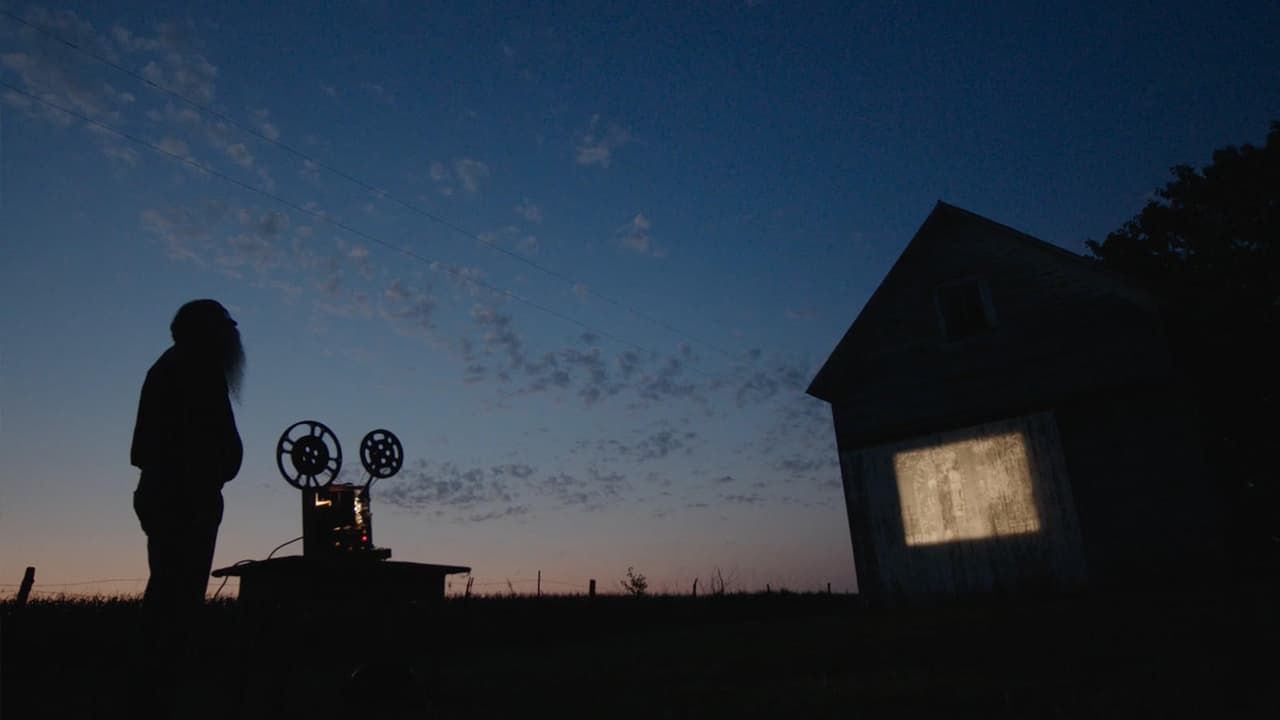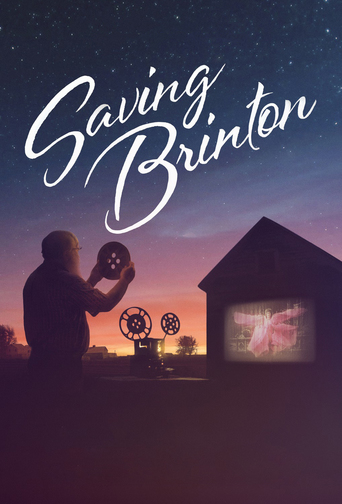

This documentary centres on Michael Zahs, who is a historian and collector from Iowa who came into possession of some ancient films which once belonged to the cinema exhibitors Frank and Ina Brinton, who operated over one hundred years ago. These films became known as the Brinton Collection and they contained many old movies long believed to be lost, including work by the most important early film-maker, the one and only Georges Méliès. The documentary looks at both these films, Zahs himself and the Iowa community he is from.I have seen a good number of silent movies from the earliest years of cinema and always marvel at the trick photography and invention which are a core feature. Méliès films in particular showcase visual invention by the bucketload. So, from the perspective of this alone, Saving Brinton is a very worthwhile film. Many of the recovered films are really rather beautiful, especially when presented in their original colour tinted glory. Any fan of cinema history should spend a little time checking these out to see how it all began. As a film itself, the documentary is admittedly a little bit lacking in focus, with no real sense of narrative urgency. There is no build up to a finale where we finally see the films themselves and I think a little more emphasis on the drama of the story would have served it well and improved it. Nevertheless, this still remains a very interesting little doc about a fascinating man and some glorious old, no longer lost, films.
... View More"Saving Brinton" follows former-schoolteacher Michael Zahs on his journey to bring recognition to and preservation for a collection of historical materials that came into his possession in the 1980s, including reels of 35mm films from the turn of the 20th Century, from the itinerant early-cinema exhibitor Frank Brinton and his wife, Ina Brinton. I admit that I'm biased in favor of this documentary. Besides being interested in early cinema, as many of my IMDb reviews will attest, I've also met some of the people involved in this film, including its present-day subject, Zahs, as well as attending his shows, and have researched the film's historical subject, the Brinton Collection, which is being housed at the University of Iowa and which Zahs saved. Regardless, "Saving Brinton" does some things exceptionally well. It's focus on the showmanship, travels and other traits of Zahs underscore how much he resembles, including facial hair that seems to belong to a bygone era, Frank Brinton, a man who has been dead for nearly a century.For years, annually, Zahs has exhibited his collection of Brinton's films at an old opera house in the tiny Iowan town of Ainsworth—one of the venues that the Brintons visited regularly during their tours of rural communities and small cities in American Midwestern and Southern states. Additionally, the climax of sorts of "Saving Brinton" is a show by Zahs at the State Theatre in Washington, Iowa. Formerly the Graham Opera House, this Washington theatre was managed by Frank Brinton, who also managed a now-gone, open-air "Airdome" theatre in the same town, after he retired from being a traveling showman due to the monopolization of the motion-picture business by Thomas Edison's Motion Picture Patents Company and the emergence of permanent movie houses, including nickelodeons and repurposed opera houses.Although Brinton (and Zahs, for that matter) didn't produce his own films, early cinema was very much a collaboration of a kind between film producers and film exhibitors—especially before multi-scene story films became prevalent. What the exhibitor did was to assemble a series of often single-shot views, but also early story films, into an evening's entertainment (like today's feature-length movie, if you will) and to elaborate on these films with lectures and other entertainments, such as magic lantern slides, music, theatrical acts and other presentations. This is what Brinton did at the turn of the last century and what Zahs has done at the turn of this century. Like Brinton, Zahs is also very much a prominent figure of his local community in the rural Iowan county of Washington; indeed, much of "Saving Brinton" involves his other local historical interests. Scenes of his now-late mother also touch upon the passing of history. The documentary does well to include images of this shared landscape, which centers a documentary that itself is very much a local product of small-town Iowa.Yet, the very same collection of films and other materials led both men to travel far and wide. One difference in their travels, however, is that Zahs is preserving history. His efforts take him to the Library of Congress to preserve the films, for instance, and overseas to confirm and exhibit the discovery of a once-lost Georges Méliès film. Brinton, on the other hand, was a world traveler, including living near Jerusalem for a time, before going into the movie business. At a time when such tourism and world, or even national, travel was far less common, Brinton's films brought the world and a tourist sensibility to the rural American heartland. Fueled with films from companies from around the world, from Edison in the urban U.S. to Gaumont, Méliès and Pathé abroad, among others, his programs were generally organized around this theme of tourism. Also fitting into this travel theme—an invention of Brinton himself— were his presentations of his not-so-successful airships."Saving Brinton" can only share a glimpse of the Brinton Collection, and it does so largely through Zahs meeting some of today's experts in early cinema, including Serge Bromberg overjoyed by the rediscovery of the Méliès film, Kathryn Fuller-Seeley comparing Ina Brinton's record book for the Brinton Company to her own research on early-cinema exhibitors (see her book "At the Picture Show: Small- Town Audiences and the Creation of Movie Fan Culture"), and Rick Altman rifling through magic-lantern slides and music sheets while he and Zahs break into song. (By the way, one interesting thing I found in the Collection, which isn't mentioned in the documentary, is the Brintons tours of the Chautauqua circuit, which compliments well research that Altman has done on Chautauqua events and early cinema, such as in his book "Silent Film Sound.")This is special. "Saving Brinton" brings two showmen separated by a century together through a wonderful collection, preserving and recreating history and the magic of motion pictures, interspersed between localism and the broader world through cinema.
... View MoreTouchingly capturing a man who saves things only when they seem to be beyond disrepair, "Saving Britton" is an uplifting documentary that, while at times needlessly meandering and amateurish, is decidedly enriching.A Washington, Iowa man, seemingly in the guise of Dumbledore, has faithfully kept a myriad of olde tyme things, but most notably a treasure trove a film canisters and artifacts from the dawn of cinema (as far back as 1895). With the aid of archivists and restorationists some movies that were believed to be forever lost have been found. And that is wonderful and fascinating, but the movie isn't as concerned with that as one might expect. The documentary is clearly focused on the man and his philosophy, which is rural Iowan to its core, utilizing everything to its fullest.It is indeed touching and even at times profound. Unfortunately a better editor could have made a top notch film, but at no point is the heart of the movie lost. I had a wonderful time at the cinema, basking in the wonders of ancient film and learning again that the past forever speaks to us.
... View More